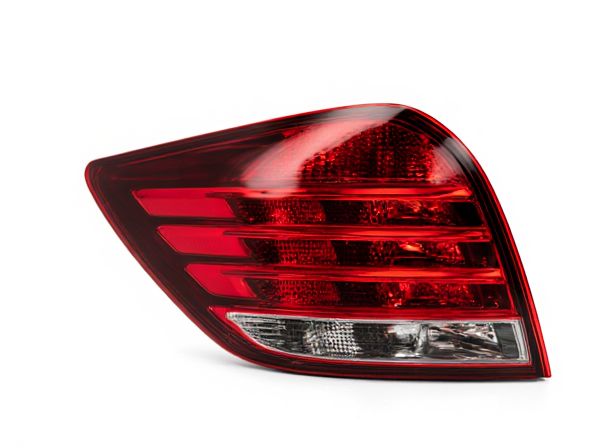
Photo illustration: Continuous Light Strip vs Segmented Light
Continuous light strips create a smooth, even glow ideal for uniform illumination and aesthetic accents, while segmented light strips offer customizable control, allowing you to change colors and patterns on individual sections. Segmented strips are perfect for dynamic lighting effects and energy efficiency, providing flexibility for various design needs. Your choice depends on whether you prioritize seamless brightness or versatile lighting customization.
Table of Comparison
| Feature | Continuous Light Strip | Segmented Light |
|---|---|---|
| Design | Sleek, uniform light flow | Distinct, separated light segments |
| Visibility | Consistent illumination, better night visibility | High contrast, clearer signal differentiation |
| Energy Efficiency | Moderate power consumption | Lower power consumption due to selective lighting |
| Durability | Single strip, potential for full failure | Individual segments reduce total failure risk |
| Maintenance | Whole strip replacement if damaged | Individual segment replacement possible |
| Cost | Typically higher initial cost | Generally lower cost and easier repairs |
| Application | Luxury cars, modern styling | Standard cars, customizable designs |
Introduction to LED Lighting Solutions
Continuous light strips provide uniform illumination ideal for seamless lighting designs, while segmented light strips offer customizable sections for tailored brightness and color control. LED lighting solutions enhance energy efficiency, longevity, and flexibility, making both types suitable for residential, commercial, and decorative applications. Selecting between continuous and segmented strips depends on specific lighting requirements, installation complexity, and desired visual effects.
What is a Continuous Light Strip?
A Continuous Light Strip consists of LED chips evenly spaced on a flexible circuit board, providing uniform and uninterrupted illumination over its entire length. It is ideal for applications requiring consistent brightness and smooth light distribution, such as under-cabinet lighting, signage, and decorative accents. Unlike segmented light strips, continuous strips do not have sections that can be individually controlled or cut, ensuring a seamless light effect.
What are Segmented Light Strips?
Segmented light strips consist of discrete sections that can be individually controlled to display different colors or brightness levels, enhancing customization and creating dynamic lighting effects. Unlike continuous light strips, which emit uniform light along the entire length, segmented strips offer precise lighting control ideal for complex lighting designs and interactive installations. These strips often use digital addressable LEDs, enabling advanced features such as color gradients, animations, and synchronized patterns.
Key Differences: Continuous vs Segmented
Continuous light strips provide an unbroken, uniform illumination ideal for seamless lighting applications along edges or surfaces, while segmented light strips consist of individually controllable sections enabling dynamic lighting effects and customizable color patterns. Continuous strips are preferred for consistent, ambient lighting, whereas segmented strips offer flexibility in brightness and color changes for creative designs. The choice depends on project requirements for either smooth, uninterrupted light or programmable, multi-zone lighting control.
Brightness and Light Quality Comparison
Continuous light strips provide uniform brightness and smooth light distribution, minimizing dark spots and creating a consistent illumination ideal for ambient lighting. Segmented light strips, with individually addressable LED sections, offer greater control over brightness levels and color variations but may present slight gaps between segments, affecting overall light uniformity. For applications prioritizing consistent light quality and even brightness, continuous strips perform better, while segmented strips excel in customizable lighting effects.
Installation and Flexibility
Continuous light strips provide a seamless installation process with consistent illumination and fewer connection points, ideal for smooth, uninterrupted lighting designs along walls or ceilings. Segmented light strips offer greater flexibility in installation, allowing customization with individual light sections that can be cut and placed around corners or irregular surfaces. Choosing between the two depends on the project's spatial complexity and the desired lighting continuity versus adaptability.
Energy Efficiency and Lifespan
Continuous light strips provide consistent illumination with fewer electrical connections, leading to lower energy loss and improved energy efficiency compared to segmented light strips. Segmented light strips, while offering customization and flexible lighting zones, often have increased energy consumption due to additional circuitry and connectors, which can slightly reduce overall energy efficiency. In terms of lifespan, continuous light strips typically experience less wear on components, resulting in longer durability and consistent performance over time compared to segmented designs that may face higher failure rates at connection points.
Design and Customization Options
Continuous light strips offer a sleek, uniform illumination ideal for seamless architectural accents and smooth curves, providing consistent brightness without visible breaks. Segmented light strips enhance customization through individually controllable sections, allowing dynamic color changes, varying intensities, and tailored light patterns for intricate design effects. Designers favor continuous strips for minimalist aesthetics, while segmented strips provide versatile lighting solutions adaptable to complex, personalized environments.
Ideal Applications for Each Type
Continuous light strips offer uniform illumination, making them ideal for ambient lighting, under-cabinet lighting, and accentuating architectural features in residential or commercial settings. Segmented light strips provide customizable lighting patterns with individual control over each segment, perfect for dynamic lighting effects, signage, or areas requiring precise light placement such as retail displays and entertainment venues. Selecting between continuous and segmented light strips depends on whether the application demands smooth, consistent lighting or flexible, programmable lighting design.
Choosing the Right Light Strip for Your Needs
Continuous light strips provide uniform illumination ideal for creating smooth ambient lighting, while segmented light strips offer customizable zones perfect for dynamic color effects and precise control. Selecting the right light strip depends on your application: continuous strips suit applications requiring consistent brightness like under-cabinet lighting, whereas segmented strips excel in mood lighting and entertainment setups with complex color patterns. Consider factors such as desired lighting effects, control options, and installation environment to ensure the best fit for your project.
 caratoz.com
caratoz.com